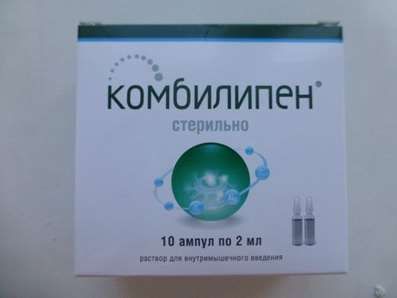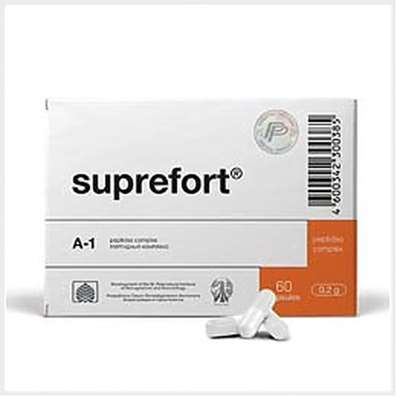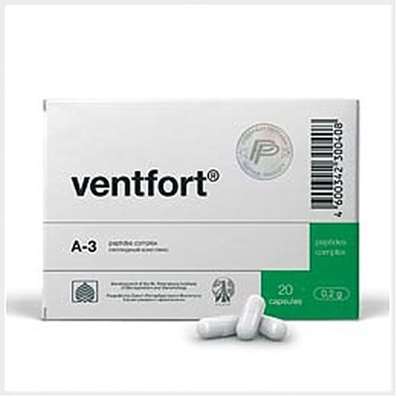Instruction for use: Ondansetron
I want this, give me price
The Latin name of the substance Ondansetron
Ondansetronum (genus. Ondansetroni)
Chemical name
(±) -1,2,3,9-Tetrahydro-9-methyl-3 - [(2-methyl-1H-imidazol-1-yl) methyl] -4H-carbazol-4-one (as monohydrochloride dihydrate )
Gross Formula
C18H19N3O
Pharmacological groups
Antiemetic means and preparations
Serotonergic agents
The nosological classification (ICD-10)
F10.3 Abstinence: Alcohol withdrawal syndrome; Abstinence syndrome; Abstinence syndrome with alcoholism; Abstinence; Alcohol abstinence; Alcohol abstinence; Alcohol withdrawal status; Alcohol withdrawal syndrome; Postabstinctive disorder; Post-abstinence condition; Hangover syndrome; Abstinence syndrome; Alcohol abstinence syndrome; Alcohol withdrawal syndrome; Abstinence condition
R11 Nausea and vomiting: Postoperative vomiting; Nausea; Vomiting; Vomiting in the postoperative period; Vomiting medication; Vomiting in the background of radiation therapy; Vomiting uncontrollable; Vomiting in radiation therapy; Persistent vomiting; Indomitable vomiting; Postoperative nausea; Vomiting with chemotherapy; Vomiting of the central genesis; Vomiting with cytotoxic chemotherapy; Persistent hiccups; Repeated vomiting
Z51.0 Radiotherapy course: Supplement to external radiation therapy; Local X-Ray Irradiation; Radiation therapy; Brain edema associated with radiation therapy; Lesion in radiation therapy; Radiotherapy
Z51.1 Chemotherapy for neoplasm: Cystitis hemorrhagic, caused by cytostatics; Urotoxicity of cytostatics
Z98.8 Other specified post-surgical conditions: Purulent complications in the postoperative period; Suppurative complications of surgery; Postoperative liver dysfunction; Postoperative vomiting; Postoperative complications; Postoperative period; Early postoperative period
Characteristics of substance Ondansetron
Selective 5HT3 receptor antagonist.
Ondansetron hydrochloride is a white or off-white powder, soluble in water and physiological saline.
Pharmacology
Pharmacological action - antiemetic.
Pharmacodynamics
Mechanism of action
The mechanism of suppressing nausea and vomiting is not known exactly. When carrying out radiation therapy and using cytostatic drugs, serotonin (5-HT) can be released in the small intestine, causing a vomitive reflex through the activation of 5-HT3 receptors and excitation of the afferent fibers of the vagus nerve. Ondansetron blocks the initiation of this reflex. Activation of the afferent fibers of the vagus nerve, in turn, can cause the release of 5-HT in the posterior field of the bottom of the fourth ventricle (area postrema) and, therefore, trigger the gag reflex through the central mechanism. Thus, ondansetron suppression of chemo- and radioinduced nausea and vomiting is most likely due to antagonistic action on the 5-HT3 receptors of neurons located both on the periphery and in the central nervous system. The mechanism of action of ondansetron for the relief of postoperative nausea and vomiting is probably analogous to that of arresting chemo- and radioinduced nausea and vomiting.
Does not violate the coordination of movements, does not cause sedation and reduced efficiency.
Ondansetron does not affect the concentration of prolactin in the blood plasma.
Pharmacokinetics
The pharmacokinetic parameters of ondansetron do not change with its repeated administration.
Suction. Ondansetron has the same systemic effect with the IM and IV in the introduction.
After oral administration, ondansetron is fully absorbed into the digestive tract and metabolized on first passage through the liver, Cmax in the blood plasma is reached after about 1.5 hours. When ondansetron is administered orally at doses> 8 mg, its blood content increases disproportionally, that when high doses are prescribed Can reduce metabolism when first passing through the liver. The average bioavailability in healthy male volunteers after taking one tablet of 8 mg was approximately 55-60%. Bioavailability increases somewhat with simultaneous application with food, but does not change when taken with antacids.
After rectal administration of ondansetron, its concentration in the blood plasma begins to be determined after 15-60 min and rises linearly until a peak of 20-30 ng / ml is reached, usually 6 hours after the onset of application. Further ondansetron concentration in the blood plasma is reduced, and the decrease is slower than with the oral route of administration, due to prolonged absorption.
Distribution. Ondansetron has a moderate ability to bind to plasma proteins (70-76%). The distribution of ondansetron is similar in oral administration, in / m and / in the administration in adults, Vss is about 140 liters.
Metabolism. Ondansetron is metabolized mainly in the liver with the participation of various enzyme systems. The absence of the enzyme CYP2D6 (spartein / debrisoquine type polymorphism) does not affect the pharmacokinetics of ondansetron.
Excretion. Ondansetron is excreted from the systemic bloodstream mainly through metabolism in the liver. Less than 5% of the administered dose is excreted unchanged through the kidneys. T1 / 2 ondansetron for oral administration, in / m and in / in the introduction is about 3 hours. In elderly patients, T1 / 2 can reach 5 h, with liver and kidney pathology - 15-32 h.
In rectal administration, T1 / 2 is determined by the degree of absorption, not by systemic clearance, and is approximately 6 hours.
Special patient groups
Floor. The pharmacokinetics of ondansetron depends on the sex of the patients. In women, there is a higher rate, a degree of absorption and a lower systemic clearance and Vd (the figures are corrected for body weight) than for men.
Children and adolescents (from 1 month to 18 years). In children aged 1-4 months (N = 19) who underwent surgery, the clearance was approximately 30% less than in patients aged 5-24 months (N = 22), but comparable to that in patients aged 3-12 years (with correction of indices depending on body weight).
T1 / 2 in patients at the age of 1-4 months averaged 6.7 hours; In the age groups 5-24 months and 3-12 years - 2.9 hours. Patients aged 1-4 months do not need dose adjustment, since this category of patients applies a single intravenous injection of ondansetron for the treatment of postoperative nausea and vomiting. Differences in pharmacokinetic parameters are partly explained by the higher percentage of fluid in the body in newborns and infants and higher Vd of such water-soluble drugs as ondansetron in patients aged 1-4 months.
Simulation of the ondansetron regimen for children aged 6 months was based on an average body weight of 7.7 kg (range 5.4-10.7 kg) and ondansetron IV dose of 0.15 mg / kg every 4 h in The first day followed by the appointment of ondansetron 2 mg in the form of syrup every 12 hours on the 2nd day. Scheme simulation results were compared in patients aged 18 months, 12 years and 30 years who used the same dosing regimen, except for the 2nd day, when ondansetron was given in tablets of 4 or 8 mg every 12 hours. These models demonstrated, That the effect of ondansetron on AUC with repeated oral administration is similar in patients of different age groups. The results of the simulation correspond to the recommendations for carrying out cytostatic chemotherapy and radiotherapy in children with a body weight <10 kg. Moreover, usually in children with a body weight <10 kg, receiving cytostatic chemotherapy and radiation therapy, the body surface area is <0.6 m2. Thus, the dosing regimens calculated for these parameters in these patients coincide.
In children aged 3-12 years (N = 21) who underwent planned surgical interventions under general anesthesia, the absolute values of clearance and Vd of ondansetron were reduced in comparison with the values in adults. Both parameters increased linearly depending on the body weight, in patients aged 12 years their values approached the values in adults. When adjusting the clearance values and Vd as a function of body weight, these parameters were close in different age groups. Calculation of the dose taking into account the body weight compensates for these changes and systemic exposure of ondansetron in children.
Population pharmacokinetic analysis in 428 patients (with malignant diseases, patients with surgical profile and healthy volunteers) aged 1 to 44 years who were prescribed ondansetron, showed that the system exposure of ondansetron (AUC) after ingestion and in / administration to children and Adolescents was comparable to that of adults (except for infants aged 1-4 months). Vd depended on age and was lower in adults than in children.
Elderly age. Studies involving healthy elderly volunteers demonstrated a small, age-associated increase in bioavailability and T1 / 2 ondansetron.
Based on the data obtained on the concentration of ondansetron in the blood plasma, as well as the results of modeling the dependence of the clinical response on exposure, a more pronounced effect on the QTcF interval in patients aged ≥75 years is suggested than in patients of younger age.
Since deducing ondansetron for rectal administration is not determined by systemic clearance, it is suggested that T1 / 2 in elderly patients is similar to that in healthy volunteers.
Impaired renal function. In patients with an average degree of renal failure (Cl creatinine 15-60 ml / min), systemic clearance and Vd decrease after iv injection of ondansetron, resulting in a small clinically insignificant increase in T1 / 2 (5.4 h). Studies in patients with severe renal failure who need regular hemodialysis (studies conducted between dialysis sessions) did not show changes in the pharmacokinetics of ondansetron after its intravenous administration. Changes in the dose or dosing regimen of ondansetron in this category of patients is not required. Given the high therapeutic index, pharmacokinetic changes are not clinically significant.
Since deducing ondansetron when used as rectal suppositories is not determined by systemic clearance, it is suggested that T1 / 2 in patients with impaired renal function is similar to that in healthy volunteers.
Violation of the function of the liver. In patients with severe impairment of liver function, the systemic clearance of ondansetron drastically decreases with an increase in T1 / 2 to 15-32 h, a decrease in presystemic metabolism occurs, and oral bioavailability reaches 100%.
The pharmacokinetics of ondansetron when applied in the form of rectal suppositories in patients with impaired liver function has not been studied.
Application of substance Ondansetron
For IV and IM injection and oral administration. Prevention and treatment of nausea and vomiting caused by cytostatic chemotherapy and radiotherapy in adults; Prevention and treatment of nausea and vomiting caused by cytostatic chemotherapy in children; Prevention and treatment of postoperative nausea and vomiting in adults and children.
Studies on the oral use of ondansetron for the prevention or treatment of postoperative nausea and vomiting in children have not been conducted. For this purpose, the use of ondansetron for intravenous and / or injection is recommended.
For rectal administration. Prevention and treatment of nausea and vomiting caused by cytostatic chemotherapy and radiotherapy.
Contraindications
For IV and IM. Hypersensitivity; Combined use with apomorphine; Congenital lengthening syndrome QT; Age to 6 months (prevention and treatment of nausea and vomiting caused by cytostatic chemotherapy in children); Age up to 1 month (prevention and treatment of postoperative nausea and vomiting in adults and children); Pregnancy and the period of breastfeeding.
For oral administration. Hypersensitivity; Pregnancy (tablets - I trimester of pregnancy); The period of breastfeeding; Children's age (tablets - up to 2 years (all dosages, experience in children under 2 years is absent), up to 3 years for a dosage of 4 mg and up to 12 years for a dosage of 8 mg, syrup for up to 6 months); Combined use with apomorphine; Congenital lengthening syndrome QT.
For rectal administration. Hypersensitivity; Combined use with apomorphine; Congenital lengthening syndrome QT; childhood; Pregnancy and the period of breastfeeding; liver failure.
Restrictions on the use
Hypersensitivity to other 5-HT3 receptor antagonists; Patients with cardiac rhythm and conduction disorder receiving antiarrhythmic drugs and beta-blockers; With significant electrolyte imbalance, prolonged or risk of QTc prolongation, including patients with water-electrolyte imbalance, chronic heart failure, bradyarrhythmia or taking other drugs with a known ability to induce prolongation of the QT interval, disturbance of the electrolyte balance or a decrease in heart rate.
Application in pregnancy and lactation
The action category for fetus by FDA is B.
Contraindicated in pregnancy (tablets - in the first trimester of pregnancy).
If it is necessary to use ondansetron during lactation, breastfeeding should be discontinued.
Side effects of Ondansetron
The undesirable phenomena presented below are listed according to the organs and systems of the body and in accordance with the frequency of occurrence when taking the standard recommended doses of ondansetron. Frequency of occurrence is defined as follows: very often (≥1 / 10); Often (≥1 / 100 and <1/10); Infrequently (≥1 / 1000 and <1/100); Rarely (≥1 / 10000 and <1/1000); Very rarely (<1/10000, including individual cases). Frequency categories were formed on the basis of clinical studies and post-registration surveillance.
The profile of adverse reactions in children and adolescents was comparable to the profile observed in adults.
From the side of the immune system: rarely - immediate reactions of hypersensitivity (urticaria, bronchospasm, laryngospasm, angioedema), in a number of cases of severe degree, including anaphylaxis.
From the nervous system: very often - headache; Infrequently - convulsions, motor disorders (including extrapyramidal symptoms such as dystonia, oculogic crisis (spasm of the eye) and dyskinesia) in the absence of persistent clinical consequences; Rarely - dizziness, mainly during a rapid IV injection.
From the side of the organ of vision: rarely - transient visual impairment (eg blurred vision), mainly during IV introduction; Very rarely - transient blindness, mainly during intravenous administration. Most cases of blindness were safely resolved within 20 minutes. Most patients received chemotherapy drugs containing cisplatin. In some cases, transient blindness was of a cortical genesis.
From the CVS: often - a feeling of heat or hot flashes; Infrequent - arrhythmia, pain in the chest, as accompanied, and not accompanied by a decrease in the ST segment, bradycardia, lowering blood pressure; Rarely - prolongation of the QT interval (including bidirectional ventricular tachycardia).
From the respiratory system, chest and mediastinum: infrequently - hiccup.
From the digestive tract: often - constipation.
On the part of the liver and bile ducts: infrequently - an asymptomatic increase in the level of hepatic enzymes ALT, ACT (mainly observed in patients receiving chemotherapy with cisplatin).
From the skin and subcutaneous tissues: very rarely - toxic skin rash, including toxic epidermal necrolysis.
General and local reactions: often - local reactions (burning sensation at the injection site, a burning sensation in the anus and rectum after administration of a suppository).
In addition: the frequency is not established - dry mouth, diarrhea, hypokalemia (connection with ondansetron is not unambiguously established).
Interaction
Caution is required in the combined use of ondansetron with inducers of enzymes CYP2D6 and CYP3A - barbiturates, carbamazepine, carisoprodol, glutethimide, griseofulvin, dinitrogen oxide, papaverine, phenylbutazone, phenytoin (and probably other hydantoins), rifampicin, tolbutamide; Inhibitors of CYP2D6 and CYP3A enzymes - allopurinol, macrolide antibiotics, antidepressants (MAO inhibitors), chloramphenicol, cimetidine, estrogen-containing oral contraceptives, diltiazem, disulfiram, valproic acid and its salts, erythromycin, fluconazole, fluoroquinolones, isoniazid, ketoconazole, lovastatin, metronidazole, omeprazole , Propranolol, quinidine, quinine, verapamil.
Caution must be exercised when applying ondansetron with drugs, prolong the QT interval and / or causing disorders of water and electrolyte balance, or reduction in heart rate.
Apomorphine. Based on the data of the deep hypotension and loss of consciousness during use with apomorphine hydrochloride, ondansetron, ondansetron with simultaneous application of apomorphine is contraindicated.
Phenytoin, carbamazepine and rifampicin. In patients receiving potent inducers of CYP3A4 (phenytoin, carbamazepine, and rifampicin), the clearance of ondansetron increases and decreases the concentration of ondansetron in the blood.
Tramadol. There are data from small studies indicating that ondansetron can reduce the analgesic effect of tramadol.
If concomitant use of ondansetron and other serotonergic drugs, including SSRIs and SNRIs, increases the risk of serotonin syndrome (an altered state of consciousness, instability of the functions of the peripheral nervous system and neuromuscular disorders).
Special studies have shown that ondansetron does not interact with alcohol, temazepam, furosemide and propofol.
Overdose
For IV and IM administration
Symptoms: increased dose-dependent adverse reactions.
Treatment: symptomatic therapy. The specific antidote is unknown.
For oral administration
Symptoms: impaired vision, constipation, decreased blood pressure and vasovagal episode with transient AV blockade of the second degree. In all cases, the phenomena are completely reversible.
Treatment: symptomatic and maintenance therapy, a specific antidote is unknown.
For rectal administration
Currently, data on overdose of ondansetron in rectal administration is not enough.
Symptoms: In most cases, the symptoms of an overdose were similar to those reported for patients receiving recommended doses (see "Side effects").
Ondansetron causes a dose-dependent lengthening of the QT interval. It is recommended to monitor the ECG in case of an overdose.
In case of an overdose of ondansetron when given orally, children were informed of symptoms indicating a serotonin syndrome.
Treatment: there is no specific antidote for ondansetron, so if you suspect an overdose, it is recommended that you take appropriate symptomatic and supportive therapy.
Further treatment should be based on the clinical situation or in accordance with the recommendations of the National Toxicology Center.
It is not recommended to use ipecacuanas for the treatment of an overdose of ondansetron, t. It is unlikely that patients will respond to treatment with ipecacuanas due to the antiemetic effect of ondansetron.
Routes of administration
Inside, IV, IM, rectally.
Precautions for the substance Ondansetron
Patients who had previously had allergic reactions to other selective 5-HT3 receptor blockers have an increased risk of developing them against ondansetron. In patients with an increased risk of prolonging the QT interval, hypokalemia and hypomagnesemia should be adjusted. Ondansetron can slow the motility of the large intestine, and therefore its appointment to patients with signs of intestinal obstruction requires special observation.
Ondansetron clearance in children aged 1-4 months is reduced, and T1 / 2 is approximately 2.5 times greater than in children aged 5-24 months. Therefore, careful follow-up is recommended for patients receiving ondansetron at the age of 1-4 months.
When combined with ondansetron and other serotonergic drugs, including SSRIs and SSRIs, the risk of developing serotonin syndrome (altered state of consciousness, instability of the peripheral nervous system and neuromuscular disorders) increases; It is necessary to ensure regular monitoring of the patient's condition.
Pharmaceutical precautions. Ondansetron in the form of a solution should not be administered in the same syringe or in one infusion solution with other drugs, with the exception of those specified in the medical instructions.
Influence on ability of management of vehicles and work with mechanisms. Ondansetron does not adversely affect the ability to drive vehicles and work with mechanisms.

 Cart
Cart





